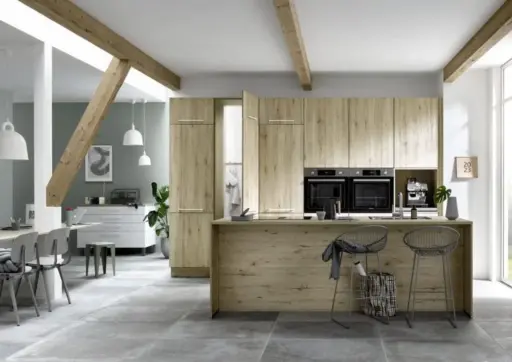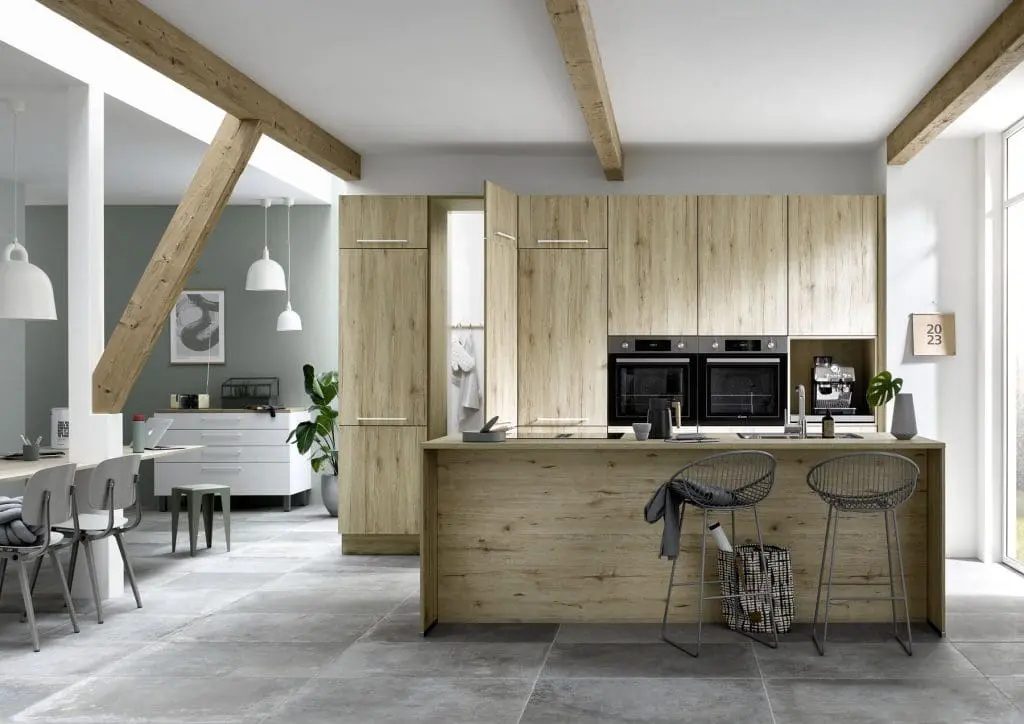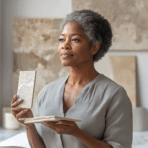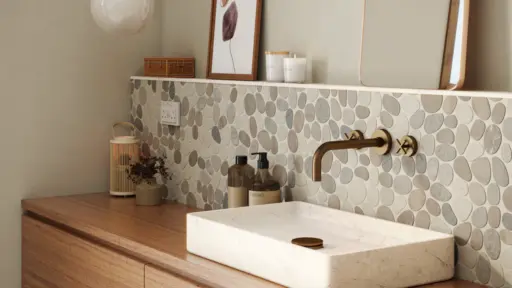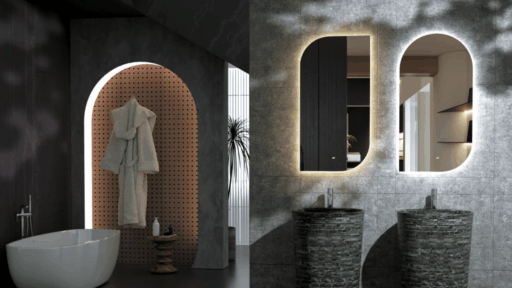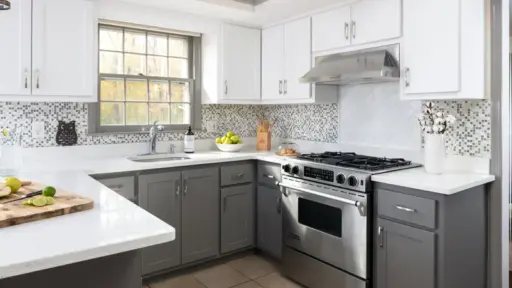Let’s be honest, remodeling your kitchen isn’t exactly something you do on a whim. It’s a major investment of time, money, and energy. So when you finally take the plunge, the last thing you want is for it to look outdated just a few years down the road.
That’s where future-proofing comes in.
The goal? To design a kitchen that doesn’t just look great today, but still feels fresh and functional a decade from now. That doesn’t mean playing it safe or stripping away all personality. It means making smart design choices that are both timeless and adaptable, so your kitchen keeps up with your life, whatever changes come your way.
Let’s break it down.
Start with a Layout That Works Long-Term
Sure, that trendy new kitchen on Pinterest looks amazing, but does it actually make sense for how you cook, entertain, and move through your day?
One of the biggest traps people fall into is designing a kitchen for a “perfect” lifestyle instead of their real one. Instead of chasing trends like ultra-minimalism or massive islands with waterfall edges, ask yourself: How do you really use your space?
Maybe you need room for two people to cook at once. Or perhaps you’re always hosting friends and need extra seating that doesn’t feel cramped. A future-proof layout isn’t about being flashy, it’s about being functional.
And don’t forget flexibility. Your needs might change. Kids grow up, in-laws move in, or maybe you decide to start working from home at the kitchen table (again). A smart layout can adapt to those shifts with minimal disruption.
Invest in Materials That Actually Hold Up
Let’s talk about the stuff you touch every day, counters, cabinets, flooring. These surfaces take a beating. If you want your kitchen to go the distance, skip the delicate finishes and opt for materials that are both stylish and sturdy.
For countertops, durability is non-negotiable. You want something that looks amazing and handles whatever life throws at it, hot pans, coffee spills, kids’ craft projects. That’s why materials like quartz kitchen countertops are a go-to for long-term design because they’re sleek, low-maintenance, and incredibly resistant to chips, stains, and scratches.
The same goes for cabinetry. Soft-close hinges, solid wood frames, and high-quality finishes will save you money in the long run. Cheap cabinets might look okay at first, but they’ll start showing their age fast, and replacing them isn’t cheap.
Flooring? Think beyond looks. Hardwood is classic, but engineered wood or luxury vinyl tile (LVT) can give you that same warm feel with better water resistance and less upkeep.
Bottom line: durable doesn’t mean boring. You can have both.
Keep It Neutral, But Not Bland

Now before you roll your eyes, hear this out: neutral doesn’t have to mean beige everything.
Future-proofing your kitchen’s color palette isn’t about draining all the personality out of it. It’s about creating a foundation that can evolve. Neutral walls, cabinetry, and counters give you the flexibility to change up the look with smaller, more affordable tweaks, like swapping out hardware, art, or even bar stools.
So yes, go for whites, greys, taupes, or even soft sage tones. But layer in contrast and texture so the space still feels warm and inviting. Think matte black fixtures, a rich wood island, or a textured tile backsplash that adds just enough edge.
Then when trends shift (and they will), you’re not stuck with neon cabinets or an avocado green range hood. You’ve got a canvas that can handle change.
Storage You’ll Thank Yourself For Later
If there’s one thing you’ll never hear someone say after a kitchen remodel, it’s “I wish I had less storage.”
Seriously, plan for more storage than you think you need. And not just generic drawers and cabinets. We’re talking about smart storage that works harder:
- Deep drawers for pots and pans
- Pull-out spice racks
- Vertical dividers for cutting boards
- Trash and recycling bins that slide out
- Appliance garages that keep clutter off the counters
Why does this matter long-term? Because your lifestyle might shift, but your need for efficient storage won’t go away. And as you age, bending and reaching into awkward cabinets isn’t going to be fun. Future-proof storage is accessible, organized, and designed to make everyday tasks easier, not harder.
Stick with Fixtures and Finishes That Age Well
Trendy finishes are fun… until they’re not. Sure, gold accents and colorful appliances might be having a moment right now. But will they still look fresh in 2030? Maybe. Maybe not.
That doesn’t mean you have to avoid trends altogether. It just means picking a few statement details instead of going all-in. Fixtures like faucets and cabinet pulls are easy to swap out later if tastes change. So go bold there if you want.
For the big stuff, like lighting, backsplash tile, and cabinet finishes, look for styles with lasting appeal. Brushed nickel, matte black, and mixed metals tend to have more staying power than shiny brass or rose gold.
The same goes for tile shapes. Subway tile isn’t going anywhere, but if you want something a little different, try vertical stacks or zellige for texture without sacrificing longevity.
When in doubt, ask: Will this still look good when my kid goes to college? If the answer is “probably,” you’re on the right track.
Avoid the Trend Trap
Let’s be real: it’s tempting to fall for design trends. They’re everywhere. On your feed. In magazines. In your friend’s just-renovated kitchen that looks like it belongs in a design showroom.
But here’s the thing, trends fade. Fast.
If you want your kitchen to still feel fresh ten years from now, you’ve got to be selective. Choose timeless over trendy when it comes to foundational elements like cabinets, counters, and flooring. Save the fun, experimental stuff for things you can easily change:
- Paint colors
- Light fixtures
- Open shelving displays
- Rugs and runner mats
- Bar stool styles
This approach lets you update your space without needing a full-blown renovation every few years. Your kitchen stays current, without being locked into a specific era (looking at you, 2000s cherry wood and Tuscan backsplashes).
Design for Life, Not Just Aesthetics
Future-proofing isn’t just about style. It’s about making choices that support your lifestyle now and down the road.
Think about accessibility:
- Wider walkways for strollers or wheelchairs
- Counter heights that accommodate different users
- Lever-style handles instead of knobs for easier grip
- Lighting that’s layered and adjustable for different needs
If you plan to age in place or stay in your home long-term, these little touches will make your life a whole lot easier later on. And even if that’s not your plan, having a universally designed kitchen adds value for future buyers who might be thinking ahead.
It’s not about making your home feel like a hospital, it’s about building comfort and function into the design from day one.
Think Beyond the Kitchen Island
The kitchen islands are amazing. But they’re not the only way to create a functional, flexible space.
If you’re tight on square footage or want more open flow, consider alternatives like:
- Peninsula layouts that double as breakfast bars
- Mobile islands or carts that can be moved
- Drop-leaf tables that extend when you need them
- Banquette seating with built-in storage underneath
The idea is to maximize what you’ve got, without locking yourself into a layout that won’t make sense if your life changes. You want your kitchen to work whether you’re throwing a holiday party or just reheating leftovers.
Your Kitchen, Your Rules
Here’s the truth: there’s no single “right way” to design a future-proof kitchen. What works for someone else might not make sense for you. And that’s okay.
The trick is to think strategically. Make choices that serve you now and later. Choose materials that can take a beating. Stick with styles that feel personal but not overly trendy. And always, always, prioritize function over flash.
Because at the end of the day, the kitchen is more than just cabinets and countertops. It’s where your life happens. Meals, memories, messes—it all goes down here.
So make it count.

